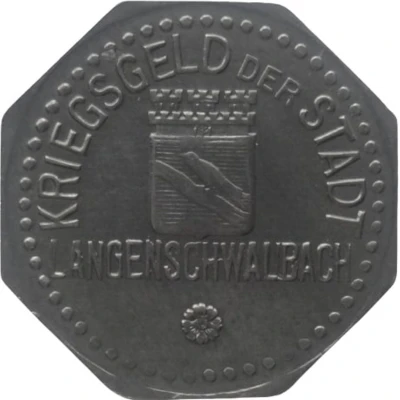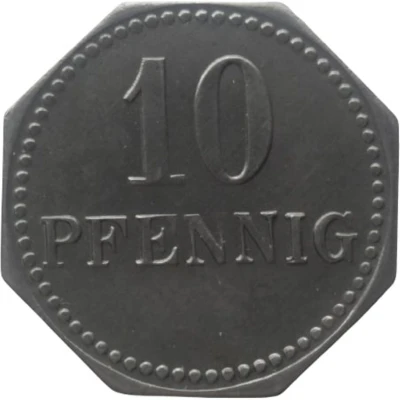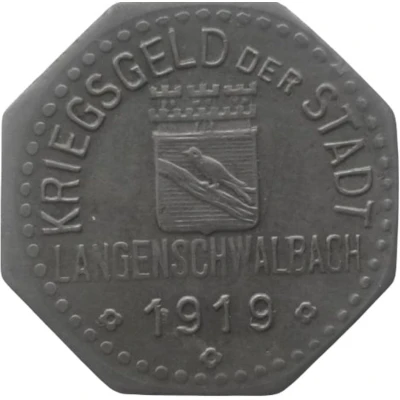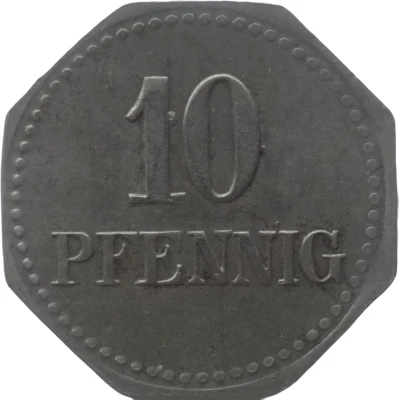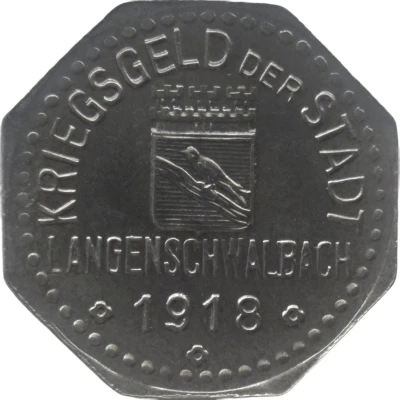
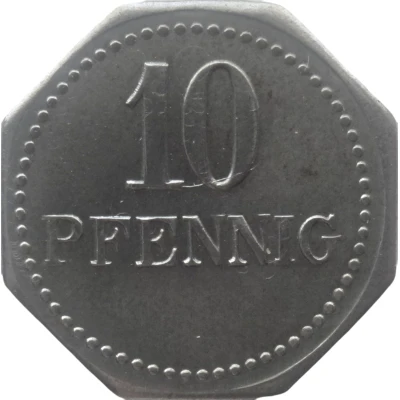

© Willem63 (CC BY-NC-SA)
10 Pfennigs - Langenschwalbach
1918 year| Iron | 2.80 g | 22.20 mm |
| Issuer | City of Langenschwalbach (Prussian province of Hesse-Nassau) |
|---|---|
| Type | Standard circulation coin |
| Year | 1918 |
| Value | 10 Pfennigs (10 Pfennige) (0.10) |
| Currency | Mark (1914-1924) |
| Composition | Iron |
| Weight | 2.80 g |
| Diameter | 22.20 mm |
| Thickness | 1.15 mm |
| Shape | Octagonal (8-sided) |
| Technique | Milled |
| Orientation | Medal alignment ↑↑ |
| Demonetized | Yes |
| Updated | 2024-10-04 |
| Numista | N#40543 |
|---|---|
| Rarity index | 80% |
Reverse
Pearl rim. Denomination in center.
Script: Latin
Lettering:
10
PFENNIG
Edge
Plain.
Comment
(Bad) Langenschwalbach is named Bad Schwalbach since 1927.Interesting fact
One interesting fact about the 10 Pfennigs - Langenschwalbach 1918 coin is that it was issued during a time of economic turmoil in Germany, known as the "Inflationary Period" (1914-1923), when the value of the German mark plummeted, and the prices of goods and services skyrocketed. As a result, the government was forced to produce coins with lower denominations, such as the 10 Pfennigs, to keep up with the increasing demand for small change. Despite its low value, this coin is a rare and interesting piece of history, offering a glimpse into a unique period in Germany's economic and political past.
